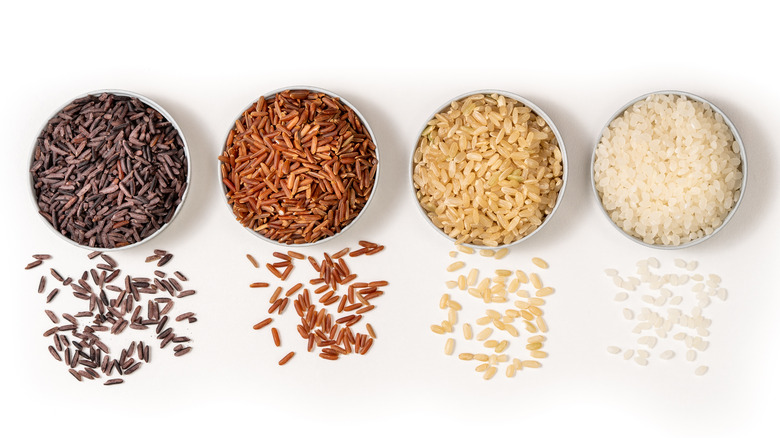- Empty cart.
- Continue Shopping
How to Choose the Right Types of Rice for Nutrients

Rice is a staple food in many cultures around the world, known for its versatility and ability to complement a wide range of dishes. However, not all rice is created equal when it comes to nutritional value. We’ll explore how to choose the right types of rice to maximize nutrient intake, focusing on factors like glycemic index, fiber content, and essential nutrients.
Types of Rice and Their Nutritional Profiles
White Rice
- Nutrients: Low in fiber, high in carbohydrates
- Best For: Quick energy, but not the best choice for sustained nutrition
Brown Rice
- Nutrients: High in fiber, vitamins, and minerals
- Best For: Long-lasting energy and digestive health
Wild Rice
- Nutrients: Rich in protein, fiber, and antioxidants
- Best For: A nutrient-dense option suitable for balanced meals
Black Rice
- Nutrients: High in antioxidants, vitamins, and minerals
- Best For: Boosting immunity and overall health
Red Rice
- Nutrients: Contains antioxidants, fiber, and essential nutrients
- Best For: Heart health and lowering cholesterol
Factors to Consider
Glycemic Index
- Low-GI Rice: Brown, wild, and black rice have a lower glycemic index, making them better options for blood sugar control.
- High-GI Rice: White rice has a higher glycemic index, which can lead to rapid spikes in blood sugar levels.
Fiber Content
- High Fiber: Brown, black, and red rice are high in fiber, aiding in digestion and promoting gut health.
- Low Fiber: White rice is low in fiber, making it less ideal for digestive health.
Nutrient Density
- Nutrient-Rich: Wild, black, and red rice are packed with essential nutrients like vitamins, minerals, and antioxidants.
- Less Nutrient-Dense: White rice is often stripped of its nutrients during processing, making it less nutrient-dense.
How to Make Your Choice
Dietary Needs
- If you’re looking to control blood sugar, opt for low-GI options like brown or wild rice.
- For digestive health, choose high-fiber options like brown or black rice.
Culinary Preferences
- Consider the texture and flavor that best suits your culinary needs. For example, white rice is often softer, while brown rice has a nuttier flavor.
Budget
- Some types of rice, like wild or black rice, can be more expensive. Balance your budget with your nutritional needs when making a choice.
Conclusion
Choosing the right type of rice can significantly impact your nutrient intake. While white rice is a quick and easy option, it may not be the most nutritious choice. Brown, wild, black, and red rice offer a range of nutrients and health benefits, from fiber and protein to essential vitamins and minerals. By considering factors like glycemic index, fiber content, and nutrient density, you can make an informed choice that aligns with both your dietary needs and culinary preferences.








